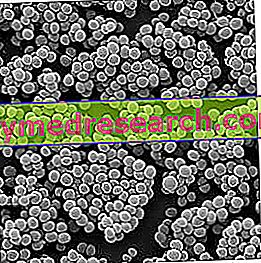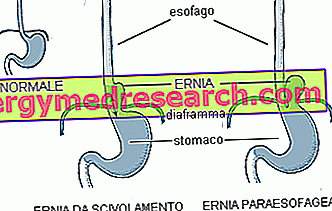Introduction
Staphylococcus is normally non-pathogenic and non-invasive, Staphylococcus epidermidis is a gram-positive bacterium almost omnipresent in human skin, sometimes found also in mucous membranes. Although it is one of the commensal microorganisms, Staphylococcus epidermidis is of pathogenic significance when - in some predisposed subjects and in favorable conditions - it creates damage.
Before analyzing the infections carried by this staphylococcus, let's analyze it briefly from the microbiological point of view.
Microbiological description

From the numerous biochemical tests performed on Staphylococcus epidermidis, interesting results have emerged, summarized below:
- Weakly positive reaction to the nitrate-reductase test
- Staphylococcus epidermidis is not able to hydrolyse the gelatin → absence of the enzyme gelatinase
- Use glucose, sucrose and lactose to form acid products
- It is positive for the production of urease (enzyme that catalyzes the hydrolysis of urea into ammonia + carbon dioxide)
In bacterial detection tests, it is essential to distinguish Staphylococcus epidermidis from Staphylococcus saprophyticus : both bacteria are negative coagulases and are similar in many respects. What distinguishes them is the resistance / sensitivity to the novobiocin: Staphylococcus epidermidis is sensitive to this antibiotic, while the Staphylococcus saprophyticus is resistant.
Staphylococcus saprophyticus causes infections in the urinary tract. The diseases carried by this pathogen mainly affect young women
Related infections
Staphylococcus epidermidis constitutes a good portion of the normal cutaneous and mucosal flora: in physiological conditions, the bacterium does not create any disturbance to the host. Suffice it to say that Staphylococcus epidermidis represents 65-90% of all staphylococci that usually inhabit skin, vagina, urethra and oral cavity.
- However, under certain conditions, Staphylococcus epidermidis can change its appearance from commensal to opportunistic pathogen. This bacterium tends to create damage in immunocompromised, catheterized subjects, subjected to surgical or transplanted implants.
When compared to Staphylococcus aureus, Staphylococcus epidermidis is a less common cause of opportunistic infections. However, similar to Enterococcus faecalis, S. epidermidis occupies an important position in nocosomal infections. In fact, most infections sustained by Staphylococcus epidermidis are documented in a hospital setting. This phenomenon can be the result of the continuous use of disinfectants and antibiotics in health facilities: a similar condition seems to have favored the selection of new Staphylococcus epidermidis strains, virulent for the organism.
- Staphylococcus epidermidis have a particular extracellular structure (glycocalyx) that covers the external tissue surface. This layer outside the cell wall acts as a tool for the adhesion of the bacterium to many and various surfaces, such as skin and catheters. The aforementioned polysaccharide film therefore gives the bacterium the ability to adhere .
It is precisely due to the extraordinary ability to bind to the catheters that Staphylococcus epidermidis has become an enemy of hospital environments.
To avoid the spread and transmission of Staphylococcus epidermidis it is essential to sterilize any hospital environment of intervention.
In patients with severely compromised immune systems, in transplanted or catheterized subjects, Staphylococcus epidermidis may create sepsis or septicemia (especially in the newborn), endocarditis patients with artificial valves and infections of the central venous catheter. Patients on dialysis are also at risk of contracting Staphylococcus epidermidis infections .
Therapies and antibiotic resistance
Staphylococcus epidermidis is rather resistant to antibiotics: this characteristic seems to be due precisely to the presence of glycocalyx. This polysaccharide film, in fact, does not only give the bacterium the ability to adhere to the most varied surfaces: the glycocalyx also constitutes a sort of protection from phagocytosis and antibiotics.
However, patients affected by infections sustained by Staphylococcus epidermidis seem to respond positively to an antibiotic treatment with vancomycin, possibly associated with rifampicin and aminoglycosides.
The best cure for Staphylococcus epidermidis infections is prevention, therefore the correct hygiene of hospital environments and medical instruments, and the continuous and accurate washing of hands.



